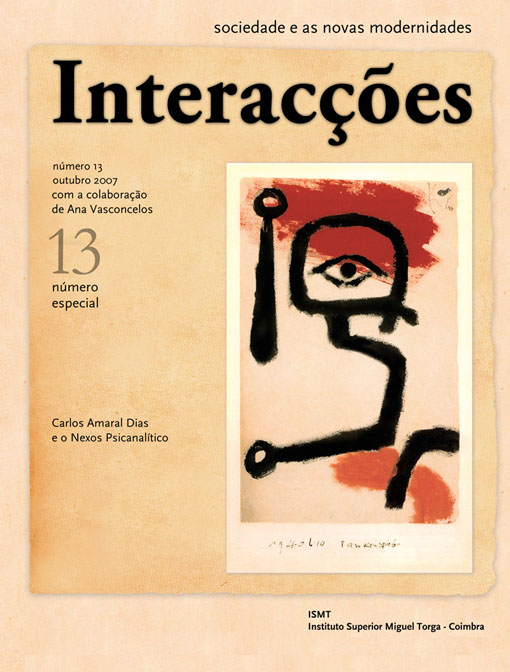Outros Pensamentos, Outras Técnicas: Psicodrama Psicanalítico de Grupo
Abstract
Neste artigo, as autoras começam por relevar a especificidade da técnica psicoterapêutica do Psicodrama, que alia a linguagem com a acção, porque todo o comportamento humano engloba os componentes corporais, emocional e verbais, e toda a acção é mediada por pensamentos. Salientando o papel que Carlos Amaral Dias tem tido como o maior impulsionador do Psicodrama Psicanalítico de Grupo em Portugal, expõem alguns dos aspectos centrais do pensamento deste psicanalista sobre o Psicodrama. Tomando como ponto de partida alguns dos conceitos introduzidos por W. R. Bion, as autoras clarificam e reconhecem novos níveis de complexidade a esta técnica psicoterapêutica. Especial importância é dada ao conceito de hipótese terapêutica, que Carlos Amaral Dias considera um organizador psicodramático, como um caleidoscópio, que acompanha toda a sessão do Psicodrama, viabiliza a sua criação e possibilita a transformação interna do paciente.
Summary
Other Thoughts, Other Techniques: Group Psychoanalytic Psychodrama
In this article, the authors begin revealing the specificity of the psychotherapeutic technique called as Psychodrama, which combines language and action,. because all human behaviour includes corporal, emotional and verbal components, and because all human action is mediated by thoughts. By stressing the role that Amaral Dias has had as the major booster of Group Psychoanalytical Psychodrama in Portugal, the authors present some of the central aspects of Amaral Dias’ thought as psychoanalyst on Psychodrama. Taking as starting point some of the concepts introduced by W. R. Bion, the authors clarify and recognize new levels of complexity in this psychotherapeutic technique. Great importance is given to the concept of therapeutic hypothesis, which Carlos Amaral Dias considers, simultaneously, a psychodramatic systematizer, and a kaleidoscope, since that concept accompanies the whole of the Psychodrama session, enables its creation and potentializes the internal transformation of the patient.
Downloads
Downloads
Published
How to Cite
Issue
Section
License
The copyright of published works is retained by the author who grants Interações the original publication right. The published article can be used freely for educational, non-commercial purposes, in accordance with the Creative Commons License - Attribution-Non-Commercial 4.0 International, provided that the author, the title of the article, the title and number of the journal are cited together with the URL or DOI of the article.



